Haunting Images that will Add Pompeii to your Bucket List
One of the intrinsic benefits of luxury travel is getting to wander off the main tourist path and visit places that can be stimulating from an intellectual point of view. The ancient city of Pompeii on Italy’s west coast is just such a place. It experienced a catastrophic ending, and within 1 day, it was completely buried for the next 2,000 years. Today, it can be visited on foot thanks to over a century of archaeological excavations. After reading her story, I encourage you to add Pompeii to your bucket list. It exploded on a beautiful August morning in 79AD. Mount Vesuvius had rumbled and grumbled for months. Residents in the wealthy city of Pompeii at the base of the mountain’s sunset side became used to their belching neighbor that kept emitting rude noises and smoky plumes on a regular basis. And so, they continued to go about their daily business.
The resort in the shadow of a time bomb
Pompeii was a vacation resort city where wealthy Romans would come to be pampered. The population was made up of mostly well-educated business people, teachers, skilled craftsmen, and artisans who dressed in styles made from delicate fabrics and embellishments; lavish Roman baths, art galleries, theater performances, and of course the finest in exotic cuisine could all be enjoyed in Pompeii.
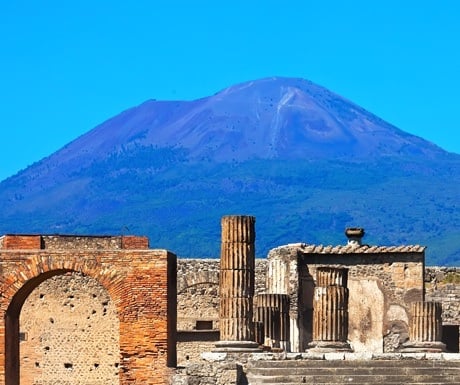
But when it blew, Mt. Vesuvius unleashed a fantasy-shattering explosion causing a 360-degree apocalypse for miles around its base. The smoke and ash were so abrupt that people were stopped in their tracks as they walked, bending in blinding fits of coughing and sputtering until they dropped where they stood. The Earth shook, and the sea brought wall after wall of home-shrouding waves. Ash, mud, thick clouds of dust and fiery stones pummeled the city until all that was left was a vast moonscape of dead scenery in the place of the city that was glorious only 25 hours earlier. Nearly 2,000 years later, archaeologists undertook the painstakingly difficult task of excavating through the hardened ash and pumice in Pompeii to uncover her ancient secrets. Haunted excavations During the process of digging, they came upon large oddly-shaped spaces or ‘bubbles’ in the hard pumice. During the 1800’s, an archaeologist named Giuseppe Fiorelli devised a clever way to understand these misshapen gaps. He filled the ‘bubbles’ with a plastery substance. After it dried, he removed the original outer pumice material only to unveil the most haunting site he had ever seen: the bubble was the shape of a human who had evidently died in agony.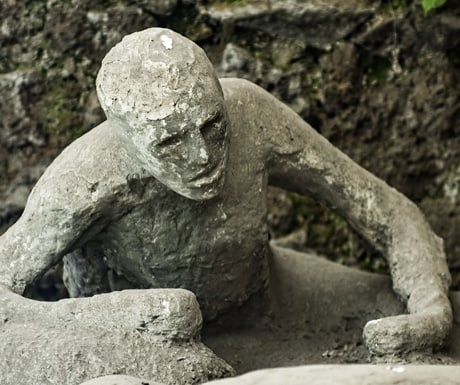
Fiorelli continued to fill more of these ‘bubbles’ and discovered the last moments of many of the Pompeiians as they took their final breath 2,000 years ago.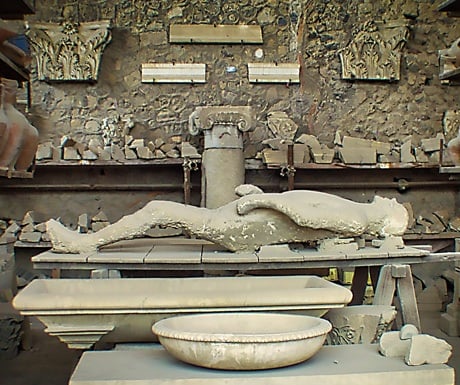
Ancient Speed Bumps These wheel ruts are so well-defined that you could almost hear the echoes of the coaches as they rumbled through the streets. The carriages had to slow down considerably for their wheels to aim between those 3 protrusions without damage. Was this an early form of speed bump?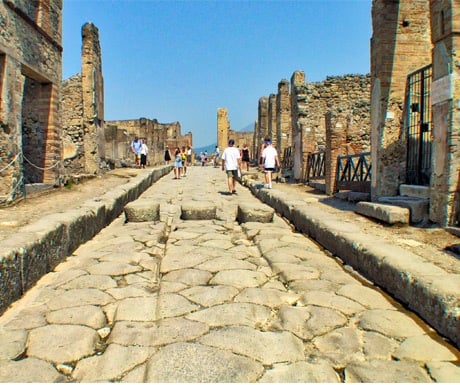
Villa of mysteries This villa has become famous because of the beautiful condition of its exquisite wall frescoes. This type of art is instrumental in educating us about the life of the locals. In this scene, it appears that a young girl is being initiated into some sort of religious cult, a point which is still argued by experts today.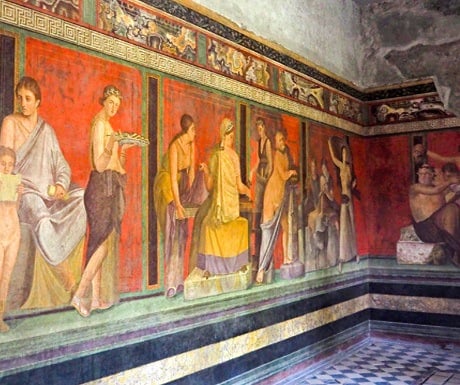
The boy in the workshop When Fiorelli saw what was emerging from the ‘bubbles’ in the pumice, he was was shocked to find so many people who were captured in real life positions. This young man looks as though he was futilely attempting to shield his eyes and nose from the onslaught.
Apollo A statue of Apollo held a bow and arrow in antiquity. However, today he appears to be reaching out to people who are no longer there.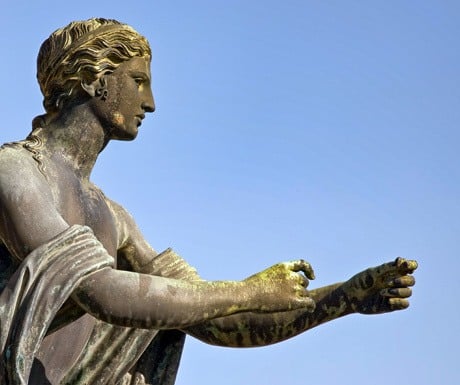
Roman baths Because of the nearby Volcano, thermal baths were common in Pompeii. Unfortunately, the mountain that brought them so much warmth and pleasure was also the instrument of their quick demise.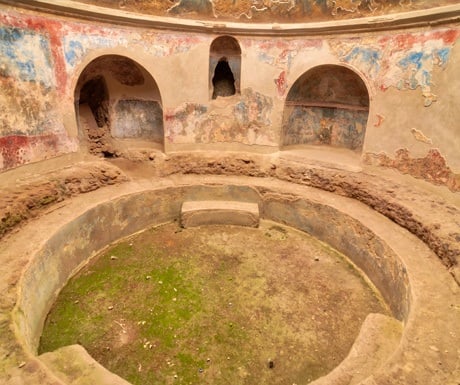
There are no exceptions These children were found mercilessly robbed of breath at such an early age. Children like these were found all over the city.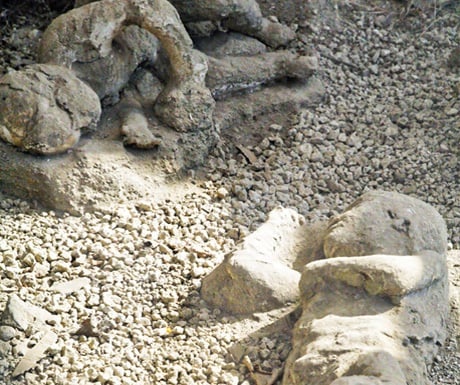
All told, approximately 2,000 people lost their lives that fateful summer day. Some citizens managed to escape by various means, but the memories of the lost souls have been preserved for us to remember for all time. “In the darkness you could hear the crying of women, the wailing of infants, and the shouting of men. Some prayed for help. Others wished for death. But still more imagined that there were no Gods left, and then the universe was plunged into eternal darkness.” ― Pliny the Younger, From The Letters of Pliny the Younger: with observations on each letter Note: Pliny the Younger was a Pompeiian who managed to escape with his life during the catastrophe of 79AD.


